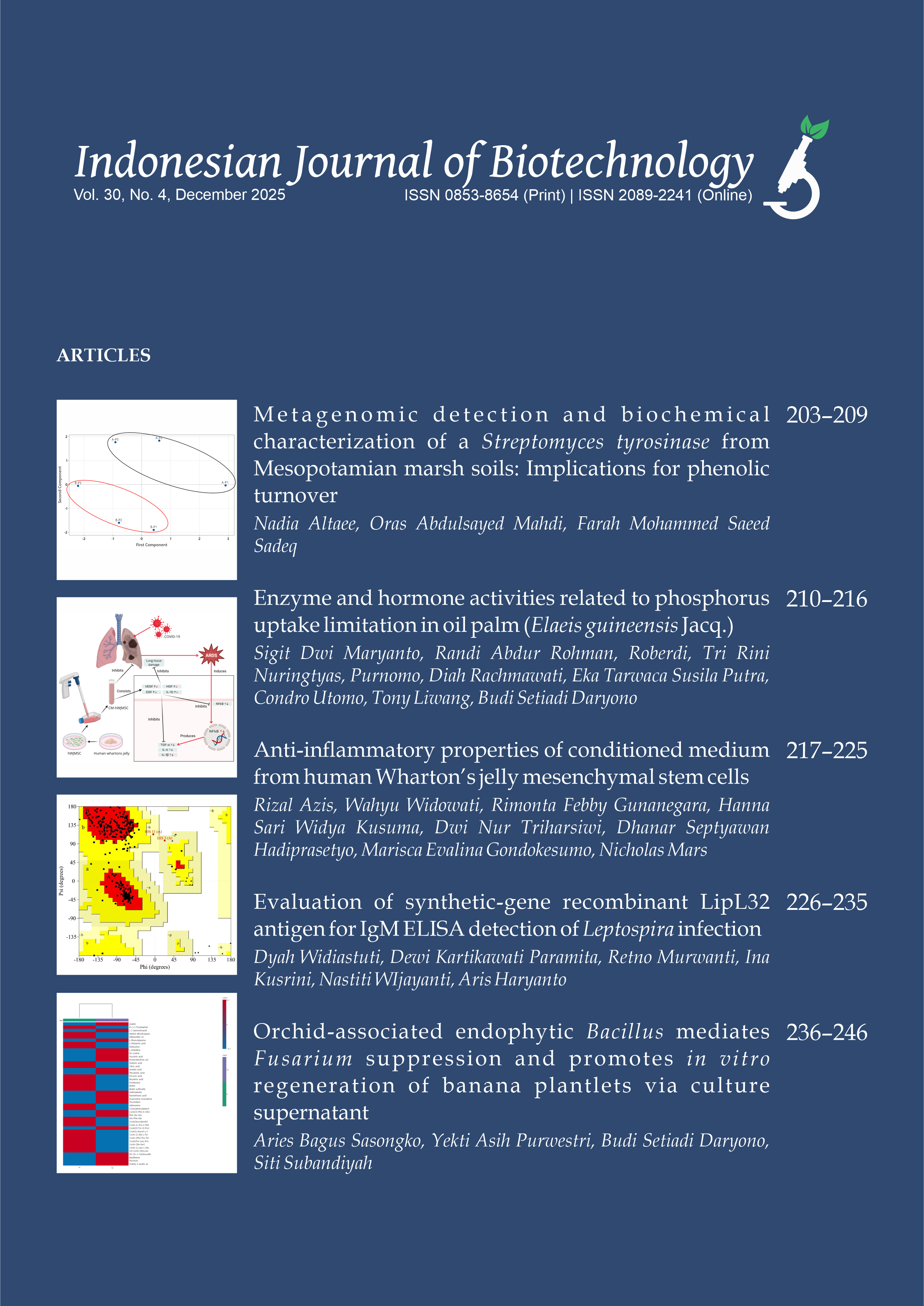Inter- and intraspecific variation of chloroplast mini- and microsatellites DNA in the four closed related Acacia species
AYPBC Widyatmoko(1*), Susumu Shiraishi(2)
(1) Center for Forest Biotechonology and Tree Improvement, Yogyakarta
(2) Faculty of Agriculture, Kyushu University, Fukuoka, Japan
(*) Corresponding Author
Abstract
Mini- and microsatellites of four Acacia species, A. aulacocarpa, A. auriculiformis, A. crassicarpa and A.
mangium were investigated on four non-coding regions of cpDNA, the intron of trnL, and the intergenic
spacers of trnL - trnP, trnD - trnY, and trnP – trnW. Nine single base substitutions and six informative miniand
microsatellites were detected in the the four cpDNA non-coding regions. Based on the substitutions
and mini- and microsatellites, ten cpDNA haplotypes (A - J) could be distinguished. Acacia auriculiformis
possessed fi ve haplotypes, A. aulacocarpa, four haplotypes, and A. crassicarpa, three haplotypes. All samples
of A. mangium possessed the same haplotype. Mini- and microsatellites recognized in this study can be
used for species identifi cation of the four Acacia species. The ten haplotypes could divided the four species
into 2 groups, A. aulacocarpa-A.crassicarpa group and A. auriculiformis-A. mangium group. By developing the
PCR-based markers based on the sequence information, many experiments can be carried out for the Acacia
improvement programs.
mangium were investigated on four non-coding regions of cpDNA, the intron of trnL, and the intergenic
spacers of trnL - trnP, trnD - trnY, and trnP – trnW. Nine single base substitutions and six informative miniand
microsatellites were detected in the the four cpDNA non-coding regions. Based on the substitutions
and mini- and microsatellites, ten cpDNA haplotypes (A - J) could be distinguished. Acacia auriculiformis
possessed fi ve haplotypes, A. aulacocarpa, four haplotypes, and A. crassicarpa, three haplotypes. All samples
of A. mangium possessed the same haplotype. Mini- and microsatellites recognized in this study can be
used for species identifi cation of the four Acacia species. The ten haplotypes could divided the four species
into 2 groups, A. aulacocarpa-A.crassicarpa group and A. auriculiformis-A. mangium group. By developing the
PCR-based markers based on the sequence information, many experiments can be carried out for the Acacia
improvement programs.
Keywords
Acacia; microsatellite; variation; chloroplast DNA
Full Text:
PDFArticle Metrics
Refbacks
- There are currently no refbacks.
Copyright (c) 2015 AYPBC Widyatmoko, Susumu Shiraishi

This work is licensed under a Creative Commons Attribution-ShareAlike 4.0 International License.









